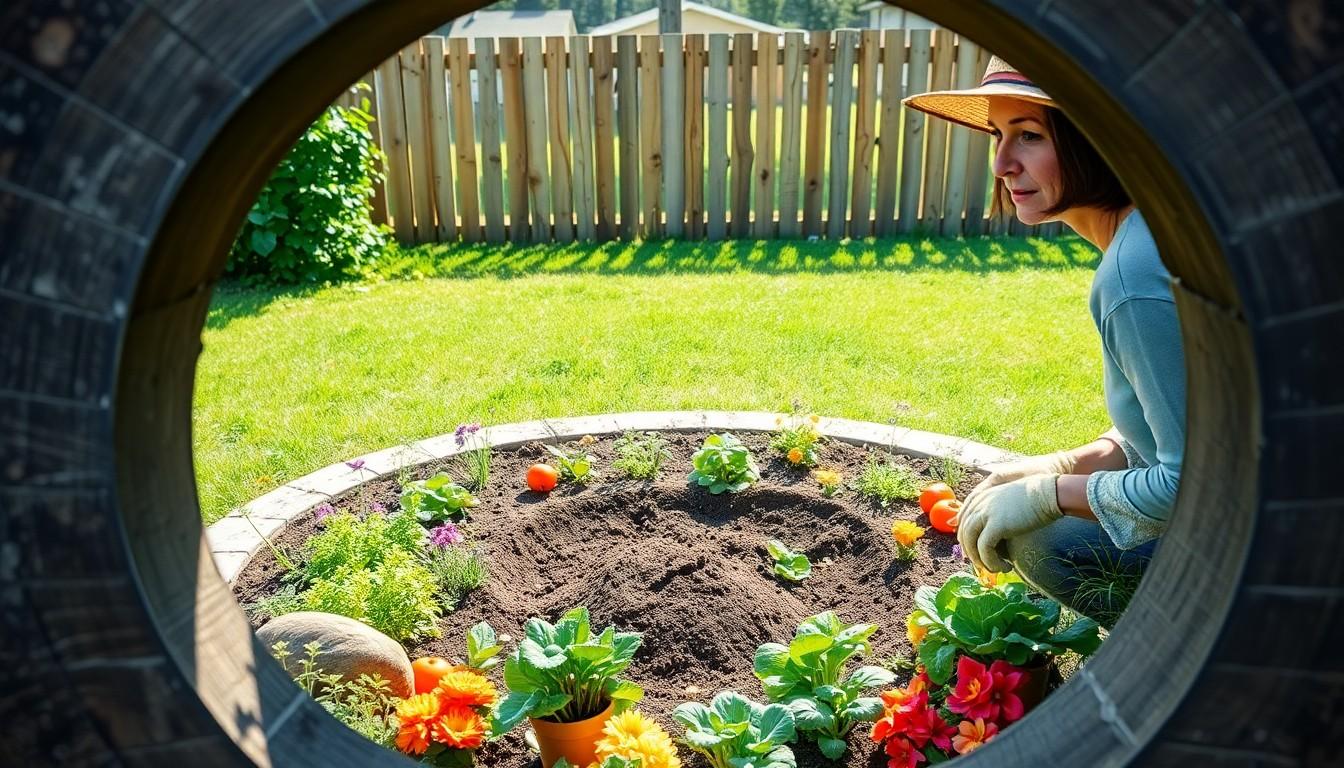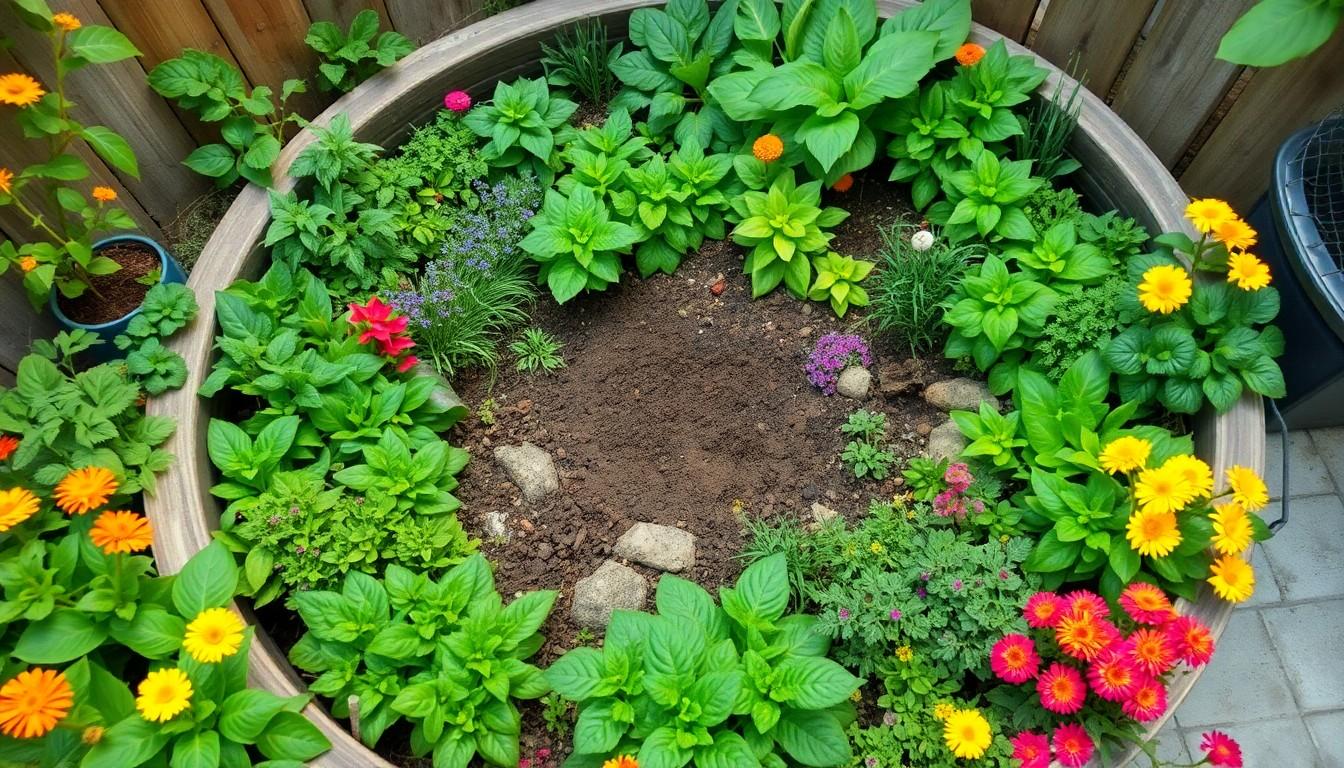The Best Fluffy Pancakes recipe you will fall in love with. Full of tips and tricks to help you make the best pancakes.

Keyhole Garden Design: Transform Your Backyard into a Sustainable Oasis
Imagine transforming your backyard into a lush oasis while saving space and water—sounds like a dream, right? Enter the keyhole garden design, the gardening trend that’s got everyone talking. This innovative approach not only maximizes your growing area but also makes you the envy of all your neighbors. Who knew that a circular garden with a little cut-out could be the secret to becoming the ultimate green thumb?
Keyhole Garden Design
Keyhole garden design represents an efficient method for urban and suburban gardening. This unique circular layout features a central compost pile that nourishes surrounding plants. Accessible from a keyhole-shaped entrance, it’s ideal for individuals with limited mobility or space constraints.
Utilizing vertical gardening techniques, keyhole gardens maximize growth within a small footprint. Various plants can thrive in these gardens, including vegetables, herbs, and flowers. With proper design, these gardens require less water, thanks to their compost system, which retains moisture.
Building a keyhole garden involves using materials like bricks, stones, or recycled materials to create the circular structure. Size varies based on available space, but a typical diameter ranges from 6 to 8 feet. A height of 3 to 4 feet allows for ease of access and maintenance.
Temperature regulation becomes easier with this garden design. The compost generates heat, supporting plant growth even in cooler climates. Strategically placed pathways enable convenient access for harvesting and maintenance tasks, promoting a productive gardening experience.
Sustainability plays a crucial role in keyhole gardens. They utilize kitchen scraps in the compost, reducing waste while enriching the soil. This eco-friendly approach appeals to environmentally conscious gardeners who prioritize sustainable practices.
Establishing a keyhole garden cultivates a sense of community as neighbors share gardening tips and excess produce. Its aesthetic appeal enhances outdoor spaces and encourages local biodiversity. With careful planning, keyhole gardens create a flourishing ecosystem while providing delicious homegrown produce.
Benefits of Keyhole Gardens

Keyhole gardens offer remarkable advantages for gardeners seeking efficiency and sustainability in their outdoor spaces.
Space Efficiency
Space efficiency stands out as a primary benefit of keyhole gardens. These gardens utilize a circular design, which allows for high-density planting. Limited area usage leads to more productive gardens that thrive even in compact spaces. With a diameter of 6 to 8 feet, keyhole gardens accommodate various plants simultaneously. Maximizing vertical growth further enhances this efficiency, enabling gardeners to cultivate vegetables, herbs, and flowers without requiring extensive land. Such arrangements make these gardens ideal for urban settings where outdoor space is at a premium.
Water Conservation
Water conservation plays a crucial role in the design of keyhole gardens. The compost central to this setup retains moisture effectively, reducing the frequency of watering. This efficient moisture retention benefits plants during dry spells, ensuring their health and productivity. Rainwater and kitchen scraps also contribute to the moisture levels, creating a self-sustaining ecosystem. By employing such strategies, keyhole gardens significantly decrease water usage compared to traditional garden layouts. Consequently, these gardens appeal to environmentally conscious individuals looking to minimize their ecological footprint.
Accessibility
Accessibility represents a vital advantage of keyhole gardens. The design ensures easy access to plants, making gardening tasks simpler for individuals with limited mobility. The elevated structure, reaching 3 to 4 feet in height, allows comfortable maintenance without bending down. Keyhole-shaped entrances facilitate straightforward access to the compost area at the center. This thoughtful design empowers all gardeners to participate actively, regardless of physical limitations. Inclusive gardening spaces foster community engagement, allowing everyone to experience the joys of gardening.
Keyhole Garden Materials and Tools
Keyhole gardens require specific materials and tools for successful construction and maintenance. Choosing the right components ensures longevity and efficiency.
Essential Materials
Bricks, stones, or recycled wood often form the primary structure. Bio-degradable items such as straw or cardboard help create the compost center. Mulch can retain moisture and suppress weeds. For the garden walls, various materials can maintain the circular shape while adding aesthetic appeal. Selecting durable choices ensures the keyhole garden withstands the elements. Soil rich in nutrients supports healthy plant growth. A decent compost mixture boosts the plants’ overall vitality.
Recommended Tools
A shovel facilitates digging and mixing of compost materials. Gloves protect hands during construction and planting tasks. Pruning shears assist in maintaining plant health through regular trimming. For watering, a watering can or garden hose provides necessary hydration. Garden trowels help with planting in tight spaces. A rake organizes the soil surface and prepares for sowing seeds. All these tools contribute to an efficient gardening experience, making it easier to manage a thriving keyhole garden.
Step-by-Step Guide to Building a Keyhole Garden
Building a keyhole garden involves several key steps, ensuring optimal design and functionality for efficient gardening.
Choosing the Location
Select a sunny spot that receives at least six hours of direct sunlight daily. Drainage plays an important role, so avoid areas prone to pooling water. Accessibility matters too; choose a location that allows easy access from all sides. Close proximity to a water source simplifies garden maintenance. Consider visibility; a well-placed garden enhances the outdoor aesthetic.
Constructing the Keyhole Structure
Gather materials like stones, bricks, or recycled wood to create the circular structure. Aim for a diameter of 6 to 8 feet to accommodate a central compost area. An ideal height ranges from 3 to 4 feet, promoting easy access for planting and maintenance tasks. Form the keyhole entrance by leaving a section open; this design provides convenient access to the compost pile. Ensure that the structure is sturdy, as it supports the weight of soil and plants.
Planting and Maintenance Tips
Choose a variety of plants based on seasonal conditions and personal preference. Begin with fast-growing options like lettuces or radishes to establish the garden quickly. Incorporate companion planting to enhance growth and deter pests. Regularly check the moisture level in the compost; it should remain damp. Mulch around plants helps conserve moisture and suppress weeds. Harvest produce frequently to encourage continuous growth and keep the garden thriving.
Keyhole Garden Design Maximize Gardening Potential
Keyhole garden design offers an innovative solution for those looking to maximize their gardening potential in limited spaces. Its unique structure not only enhances accessibility but also promotes sustainability through effective composting and water conservation.
By embracing this method, gardeners can cultivate a diverse array of plants while fostering community connections. With its focus on efficiency and eco-friendliness, keyhole gardening stands out as a practical choice for urban and suburban enthusiasts alike.
Creating a keyhole garden is not just about growing plants; it’s about nurturing a vibrant ecosystem that benefits both the gardener and the environment.
